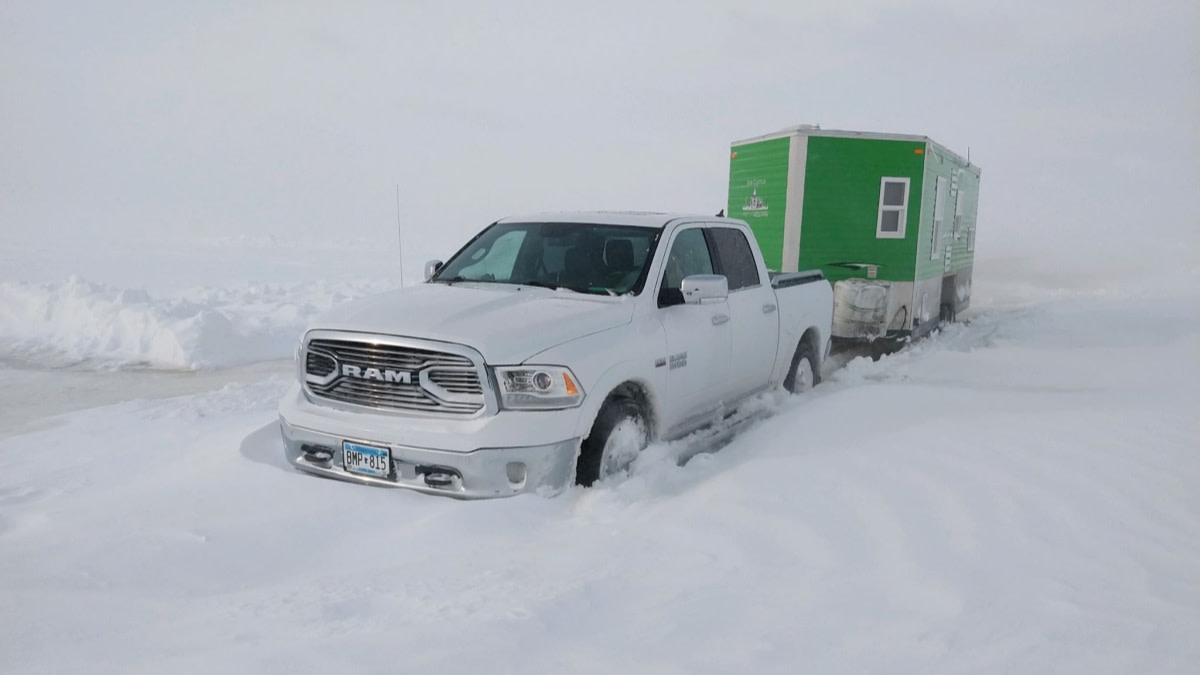
With walleye season winding down across Minnesota, fishermen from all over the state descended on the most famous lakes for a final weekend of action. Friday and Saturday offered beautiful weather: temps in the 30s with barely a breeze. Sunday, however, ushered in a storm that brought straight-line winds and subzero temps.
Many anglers were aware of the approaching storm. News stations covered the ground blizzard in advance of Sunday, and local fishing guides advised clients that nasty winter weather was on the way.
Randy Simons, owner of Randy’s Rentals, services about 45 ice shacks out of his landing on Mille Lacs Lake. He warned renters in person and through social media that if they didn’t get off the lake by 6 a.m. on Sunday, they could be stranded.
“Most of our fishermen were back on shore by Saturday night,” Simons said.
Not everyone had connections to the outside world, though. Allen Foster, who arrived at Lake of the Woods on Thursday afternoon, was fishing an area without cell service or radio reception. He and his fishing buddy originally planned to leave Sunday afternoon but decided to take off that morning after noticing winds were picking up.
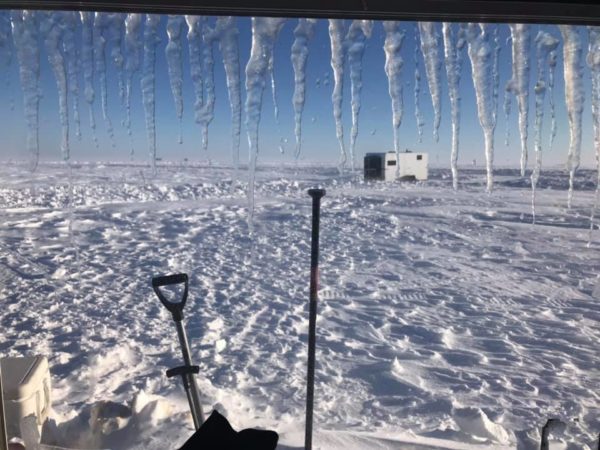
“We started packing the truck in the middle of the night,” Foster said. “The wind was so strong that we could barely stand up, but figured we’d be better off waiting until sunrise than try driving in the dark.”
At dawn, they started the 22-mile journey towards shore. It came to an end shortly after it started when Foster inadvertently drove into a slushy area that brought the rig to a halt. He’d wait there for the next 32 hours for help to arrive, all the while doing mental calculations on how long the propane in his ice shack and gas in his truck would last.
“I barely slept on Sunday night,” Foster said. “I was anxious knowing that I’d only be able to keep the ice shack and pickup running through Monday evening. I didn’t know what I’d do after that.”
Foster’s situation wasn’t unique. Hundreds of other anglers on Lake of the Woods, Mille Lacs, Rainy Lake, Red Lake and Lake Winnibigoshish also found themselves drifted in. During that time, portions of the area experienced gusts up to 60 mph and temps as low as -6 degrees.
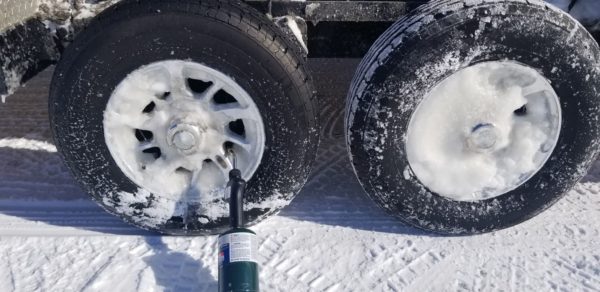
“This was the worst condition I’ve ever seen the lake in 20 years of being here,” Simons said. “The storm didn’t bring much snow, but it didn’t need to. The lakes were already covered in so much powdery snow that it created whiteout conditions. When I looked out my window Sunday morning, I couldn’t see 20 feet from the house.”
Simons sprang into action at daylight and began trying to plow paths for fishermen. His immediate efforts were futile; just as quickly as he’d plow an area open it would drift shut again. Still, he kept at it and was able to organize a team of v-plows, skid-steers, tractors and snowblowers to help reach stranded anglers. Simons and the crew worked 23 straight hours opening up roads on the lake and getting pickups and ice houses unstuck. He estimates they helped about 50 people get to shore.
“Mother Nature was really hard on us,” Simons said. “There were 5-foot drifts on the lake. Anytime you stepped outside it felt like a sandblaster was hitting you in the face. It was so bad that we had rescuers needing rescued.”
Although the majority of search and rescue efforts were carried out by small businesses and volunteers, some agencies got involved when missing persons calls started coming in on Sunday. The Lake of the Woods sheriff’s office and Minnesota Department of Natural Resources sent snowmobiles and ATVs to search for fishermen and deliver supplies, like gas and propane. The Border Patrol even deployed a helicopter on Monday and Tuesday to make sure that the remaining ice shacks were showing “signs of life.”
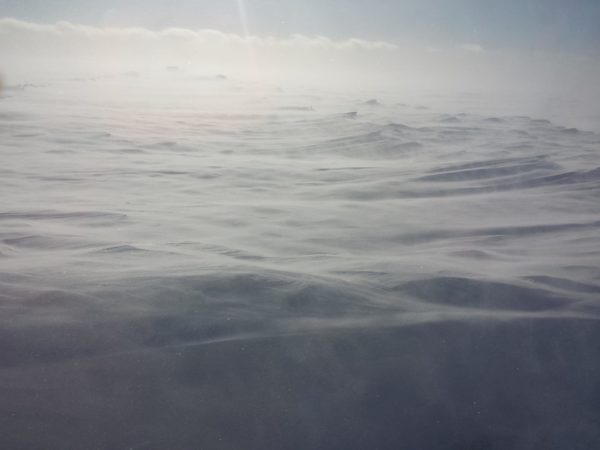
“People are out shoveling,” said Sheriff Gary Fish in an interview with the Northern Light Region newspaper. “No one is running out of the [ice] houses waving us down.”
All of this comes exactly 10 years after the most infamous ice fishing rescue mission of all time, where 150 anglers became stranded on a large piece of floating ice in Lake Erie. One fisherman died in the incident when he fell in open water as the ice floe broke away from shore. The U.S. Coast Guard was tasked with saving the anglers, using a combination of helicopters, airboats and hovercrafts to reach the marooned groups.
Similar to the recent blizzard, Ohio anglers were given notice that this could happen. Just a few days prior, the National Weather Service issued a warning that ice floes were expected to start separating because of wind and warm weather.
“If there was a section in the code about common sense, we would have had 150 arrests out there today,” said Sheriff Bob Bratton in a 2009 interview with CNN. “This was wrong. These people endangered the life of volunteer firemen and the U.S. Coast Guard.”
Not everyone involved in the Minnesota rescue efforts expressed sympathy for the snowed-in anglers, either.
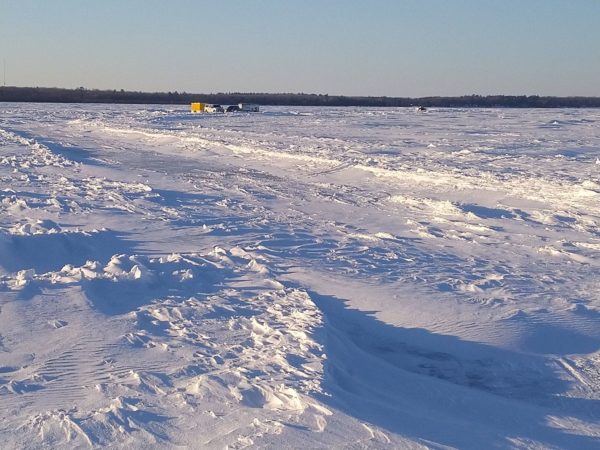
“It’d be incorrect to call these people stranded,” one volunteer said, who wanted to remain nameless. “Anyone who tried getting off the lake after Saturday night just had poor planning.”
Foster admits that he was among those unprepared for the conditions. He said that he’s already started a checklist of things that he’ll never go ice fishing without again, including a blow torch and extra socks.
“Most folks were ready to ride out the storm,” Simons said. “Others weren’t, and it’s usually them that have a false sense of security that someone will get them out of whatever they get into. Us resort owners who maintain the ice roads take on a lot of responsibility.”
As for the fishing, Simons reported that the bite was steady.
“Guys were having some luck, but no fish is worth putting yourself or others in danger.”
On Tuesday night, multiple law enforcement agencies announced that all missing anglers have been accounted for. There are still crews working to remove stranded ice shacks, though.
Feature image via Allen Foster.





